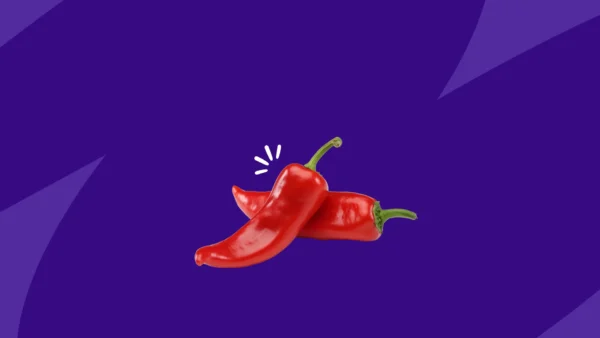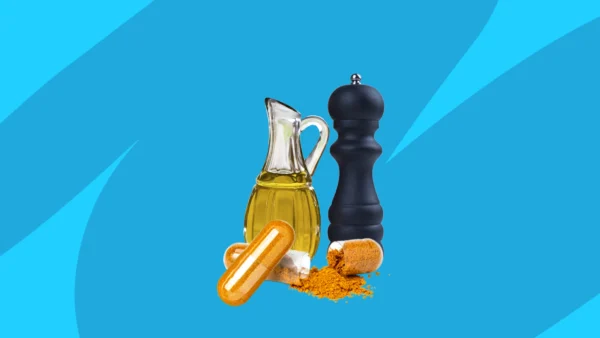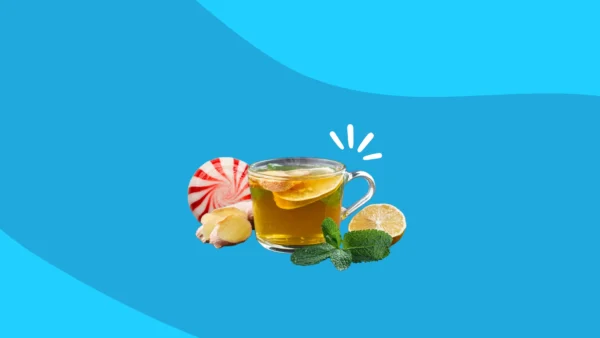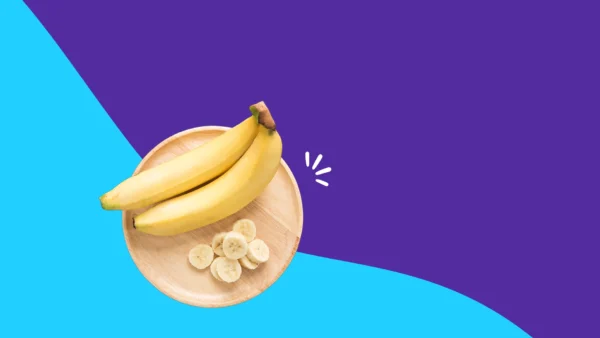Many people think of migraines as really bad headaches. But chronic migraine is considered a neurological disease, which affects at least 39 million Americans. Characterized by moderate to severe pain, migraine attacks usually cause nausea, sensitivity to light and sound, and vomiting. They can also last for days at a time.
With that type of track record, it’s no surprise that people who suffer from migraines want to prevent or minimize them. Some people find that certain foods and drinks can either keep a migraine attack at bay or reduce its severity—or, conversely, bring one on. Read on for specific foods to include or avoid in a migraine diet.
RELATED: What is migraine? | Migraine statistics
What is the best diet for people with migraine?
Certain foods and drinks can act as a trigger for migraines, meaning that after ingesting them, a migraine attack comes on. There’s no one migraine prevention diet that can prevent all attacks, but there are diets that may be helpful to people with migraine.
Plant-based diets
If you’re looking to reduce migraines, you may want to cut back on meat and add in more vegetables, especially leafy greens. One small study found that a low-fat, plant-based diet reduced both the severity and frequency of migraines during a 16-week study. Another case showed a single 60-year-old man who had severe migraines for more than a decade benefited greatly from a dietary change. Three months after switching to a Low Inflammatory Foods Everyday (LIFE) diet, his number of “headache days” went down from from 18-24 a month to zero.
The diet focuses on nutrient-dense, dark green leafy vegetables and a whole food plant-based diet. The researchers believe that the focus on leafy veggies—like spinach, kale, and watercress—tripled the man’s beta-carotene levels. Beta-carotene is a carotenoid, which is anti-inflammatory and lowers oxidative stress. Systemic inflammation and oxidative stress have both been linked to migraines.
Keto diet
The ketogenic diet was originally used to treat epilepsy, but it may also relieve migraines as well. While more research is required, one early study demonstrated that while migraine frequency or severity wasn’t altered, there was a clinically important trend toward migraine attacks not lasting as long. Another study found that after a month of following a keto diet, study participants experienced a reduction in migraine attack frequency and duration.
Keto diet focuses on high fats, a moderate amount of protein, and extremely low amounts of carbohydrates.
Elimination diet
Because migraine triggers differ depending on the individual, a migraine diet that’s successful in reducing attacks or severity for one person might not work for another. Instead of following one specific diet, you can keep track of what you’re eating to discover a pattern between eating specific foods or drinks and getting migraines.
“Keeping a food diary to help identify personal triggers and, once those triggers are known, working to avoid them, is a very helpful way to identify what diet works best for an individual who has migraines,” says Alice Williams, MD, a physician based in Las Vegas, Nevada.
Bring your food diary to your next doctor’s appointment, so you can discuss your migraine triggers and how to avoid them. The solution may include an elimination diet. This is the process of removing food or drink you think might be problematic from your diet for at least a few weeks. During this time, you’ll record on a calendar how you’re feeling daily (like on a scale from 0-10) while marking the dates of migraines and how long they last.
After the elimination diet is over, you’ll slowly reintroduce the food into your diet. Continue to track how you’re feeling. Mark on the calendar which foods or drinks have been added. Add one new food or drink every week or two to help with tracking consequences. If, upon reintroducing the food, you notice negative changes, you may need to give it up completely. Of course, before beginning an elimination diet—or any diet!—it’s important to speak with a healthcare professional.
8 migraine food triggers
A migraine diet would be simpler if everyone reacted similarly to the same foods, but each person has unique triggers. “While some people may be able to eat anything without consequence, others find that certain foods or drinks can cause a migraine,” Dr. Williams says. “Any food can potentially be a trigger if consumed in large quantities or if the person has a sensitivity or an allergy to it.”
While it’s widely thought that some foods can be triggers, researchers aren’t yet certain what causes this. One study posits that dietary triggers prompt the release of serotonin and norepinephrine, which cause blood vessels to constrict, or that the foods directly stimulate parts of the nervous system.
Regardless of how exactly food triggers work, there are some common ones that you may want to avoid if you live with migraine.
1. Alcohol
Some people say that the nitrites in red wine cause headaches. If you have migraine, it may be time to swap the wine glass for a sparkling water—but not for the reason you think. Alcohol itself is one of the most common migraine triggers and can prompt a migraine soon after drinking. This is different from hangover headache pain. It’s still not clear if it’s the alcohol specifically that brings on a migraine or another component in alcoholic beverages, but either way, any boozy beverage—especially dark or bubbly drinks—could leave you hurting the next day in more ways than one. If you decide to imbibe, vodka is the least likely to cause a migraine.
2. Caffeine
Could your morning coffee be triggering your migraine? It’s possible. Caffeine is a double-edged sword because drinking it may trigger a migraine, but caffeine withdrawal is even more likely to set off migraines. A review of research found that while it may not be necessary to give up your morning caffeinated coffee entirely, don’t exceed 200 mg of caffeine daily—and be aware that abrupt withdrawal may have repercussions. Meaning, if you drink more than three or four cups a day, you should gradually start reducing your caffeine intake. Excessive caffeine consumption is a known risk factor for developing daily headaches.
3. Processed meats
Processed meats, such as hot dogs, deli meat, or bacon often contain nitrates. These additives are used as preservatives and are another common migraine trigger. People who get migraines from nitrates can expect the migraine to come on three to six hours after ingestion. These foods are more likely to trigger a migraine among people who already get migraines.
4. Aged cheeses and fermented food
If you enjoy dairy products such as cheddar or blue cheese, pickled foods like sauerkraut, fermented soy products like miso or tempeh, you’re eating tyramine, a suspected migraine trigger. People who get migraines may not have the right enzymes to break down tyramine, resulting in a migraine. A good rule of thumb is that if the food is aged or fermented, it’s likely to contain tyramine.
5. Aspartame
The artificial sweetener has been linked to migraines. There’s a correlation between aspartame and headaches and, for those who get migraines, the link is even stronger. The most common brand name of aspartame in the U.S. is Equal. Aspartame is also found in sugar-free products like diet soda or ice cream, gelatin, desserts, and more. If you suspect that aspartame affects your migraines, be sure to read the ingredients list of sweets first.
6. MSG
Monosodium glutamate, also called MSG, is an ingredient used to enhance the flavor of vegetables, soups, and other restaurant foods. It might be delicious, but it can have serious consequences for people with migraine. One study found that it’s a potential trigger. If you think it might be contributing to your attacks, avoid fast food, chips and packaged snacks, frozen meals, processed meats, instant noodles, and always ask your server if the restaurant uses this seasoning.
7. Citrus fruit
If you start your morning with a glass of orange juice, it’s time to reconsider. Citrus fruits, including oranges, grapefruit, lemons, limes, and pineapple—along with their juices—are found to be a significant common trigger for migraine. They also often contain high levels of tyramine, a substance known to cause headaches.
8. Gluten
Migraine prevention diets often recommend avoiding yeast-risen bread products, including any doughnuts, bread, pizza crust, or even croissants. That’s because there’s an association between celiac disease and migraine. Both conditions generally improve on a gluten-free diet.
4 foods to prevent migraine
Sadly, there’s no magic bullet that will prevent migraine headaches, but “vegetables, fresh protein sources, and whole grains should be the foundation of your diet,” says Maria Dolgovina, MD, a board-certified neurologist. It’s important not to go for long periods without eating as well, which could induce a migraine. Be sure to add this list of foods to your diet.
1. Plenty of water
It may sound basic, but dehydration is a major migraine trigger, says Dr. Dolgovina. Keeping a water bottle on hand or trying different types of water, like sparkling or flavored, could help meet your liquid quotient for the day. Bonus points if you replace an artificially sweetened drink with water. Research found that drinking more water can reduce the severity and duration of a migraine attack.
RELATED: Benefits of drinking water
2. Leafy green veggies
These foods end up on every “best of” list for a reason—they’re great for you and for your migraines. Try adding different varieties of leafy greens to your rotation. In addition to spinach and kale, there’s arugula, watercress, mustard greens, turnip greens, and Swiss chard.
3. Fatty fish
Fans of fatty fish like salmon, tuna, herring, and sardines, rejoice. A diet high in omega-3 fatty acids and low in omega-6 acids reduces the number of chronic headaches according to a randomized, single-blinded, parallel-group clinical trial. Other foods that are high in omega-3s include flaxseed oil, walnuts, natto, egg yolks, sardines, flaxseeds, and hemp seeds. It might be due to the anti-inflammatory properties that omega-3s have. Omega-6 foods include a variety of oils, like grapeseed, sunflower, corn, walnut, and sesame, and soybeans. While omega-6 foods are also a necessary part of a person’s diet, the modern Western diet usually skews to a much higher ratio of omega-6 foods to omega-3s.
4. Ginger
While it’s inconclusive that ginger can prevent migraines, the root can be used to treat the nausea and vomiting that often come with strong migraine attacks. Try making a tea with fresh ginger root or adding grated ginger to your meals.
RELATED: Health benefits of ginger
Other ways to prevent migraines
For such a common disorder, there’s still a lot about migraines that we don’t know. “What causes a migraine is not completely understood,” Dr. Williams says. “It is thought to be a result of signals sent from overactive nerve cells that trigger nerves in the head and face, causing the body to release chemicals that cause swelling in blood vessels in the lining of the brain, which leads to pain.”
Migraine medication
There are two types of migraine treatment: abortive treatments and preventive treatments.
Abortive treatment are used at the onset of a migraine to minimize or stop the pain, but do not prevent the migraine from returning. Migraine medicine is offered in pill form, nasal sprays, injectables, rectal suppositories, and melt-in-your-mouth pills. Patients can select a non-oral route of administration if their migraines often present with significant nausea or vomiting. These medications include:
- NSAIDs (like ibuprofen or naproxen)
- Triptans (like Imitrex or Maxalt)
- Ergot alkaloids (like Migranal).
If a severe intractable migraine (called status migrainosus) has been present for 72 hours or more, patients may be treated in urgent care or the emergency department with a combination of intravenous fluids and intravenous medications.
Preventive treatment help reduce the frequency and severity of migraine attacks. These medications include:
- Anti-CGRPs (like Aimovig or Ajovy)
- Antidepressants (such as Elavil or Effexor)
- Anticonvulsants (including Topamax or Depakote)
- Beta blockers (like Inderal or Corgard)
- Injectables (like Botox)
Read more: When to talk to your doctor about a prescription for migraine
Lifestyle changes
In addition to food and drinks, the list of potential migraine triggers is long and include bright lights, loud sounds, strong smells, stress, dehydration, and poor-quality sleep. Similar to a food diary, Dr. Williams recommends keeping a headache diary to notice a correlation between potential triggers. Make changes to avoid triggers as much as possible in the future.
Natural remedies
If you have a migraine disorder, try these natural remedies to find relief:
- Lie down in a dark, quiet safe place
- Place a cold or hot compress on your head or neck
- Try to sleep
- Use acupuncture both to help prevent and treat migraines. “When compared to prophylactic drug therapy, acupuncture is at least as effective and has the added benefits of being safe and less side effects,” said Dr. Williams.
In other words, if changing your diet doesn’t eliminate migraines, you have options. Most migraine management plans involve several different methods of treatment. Work with your provider to find the combination that reduces frequency and severity of attacks for you.











